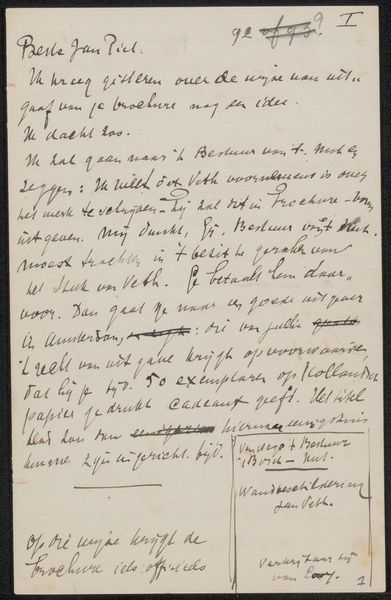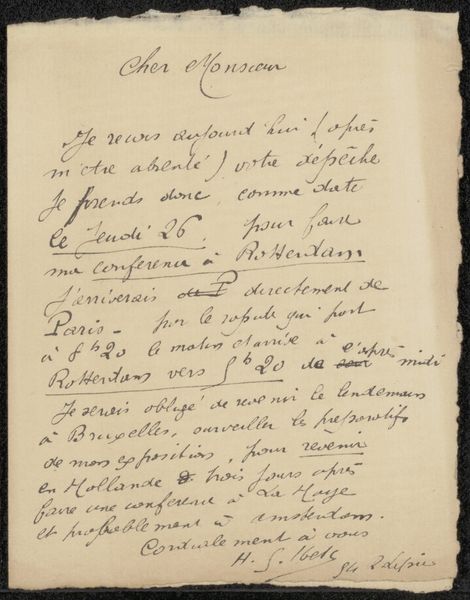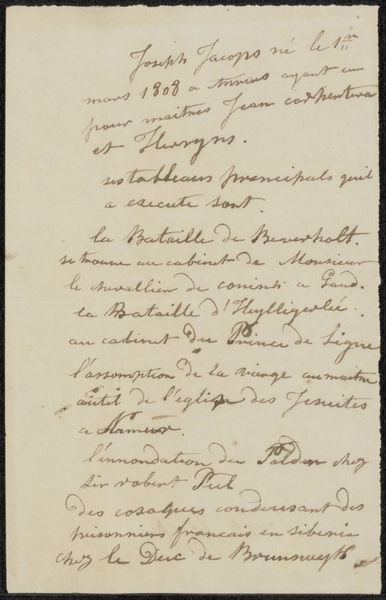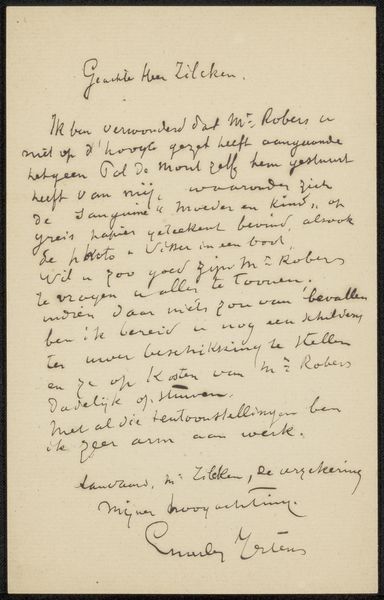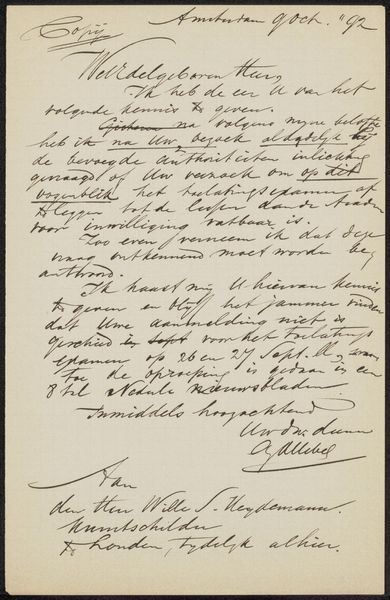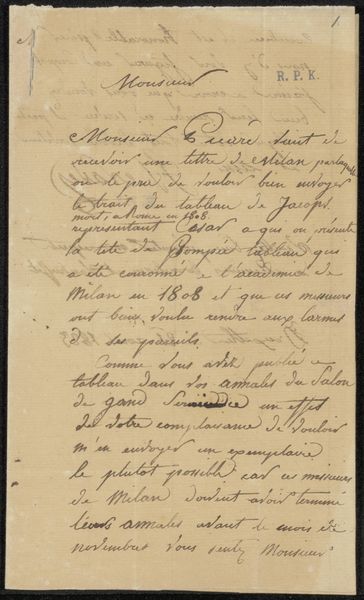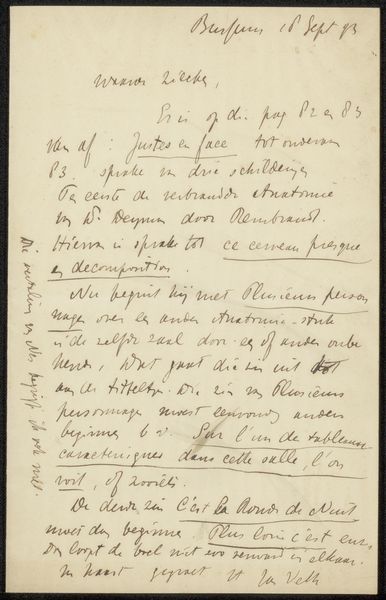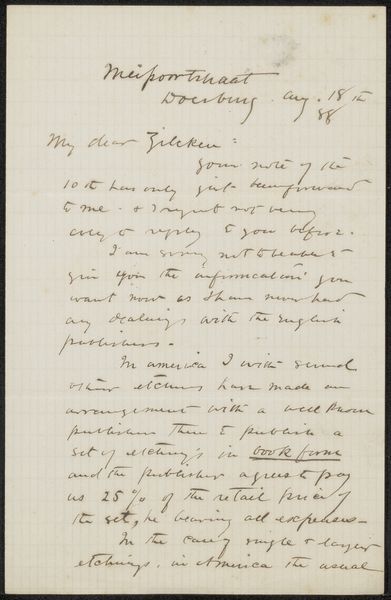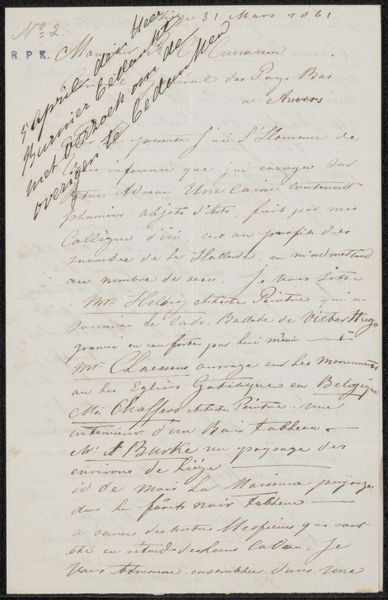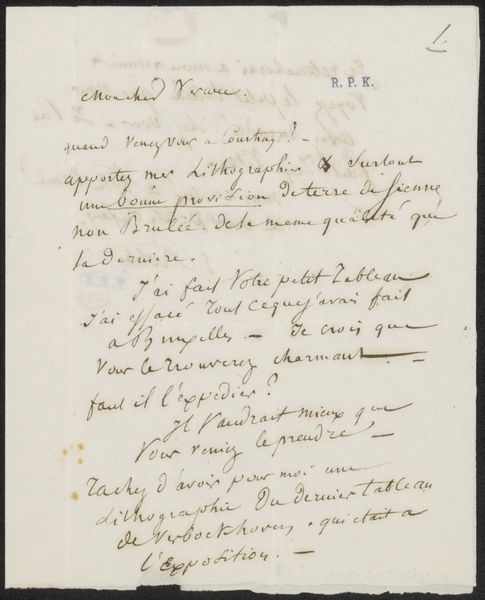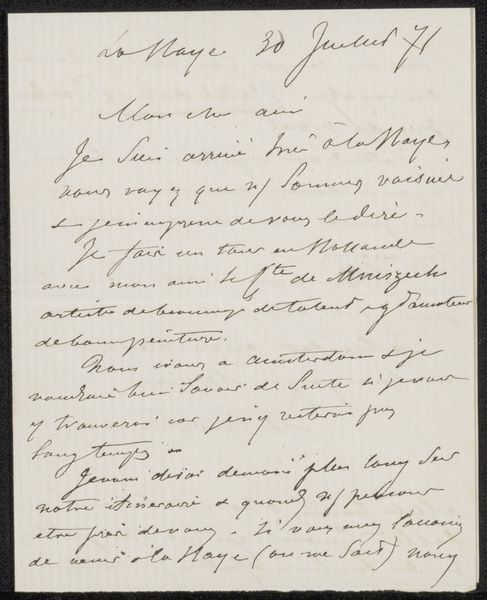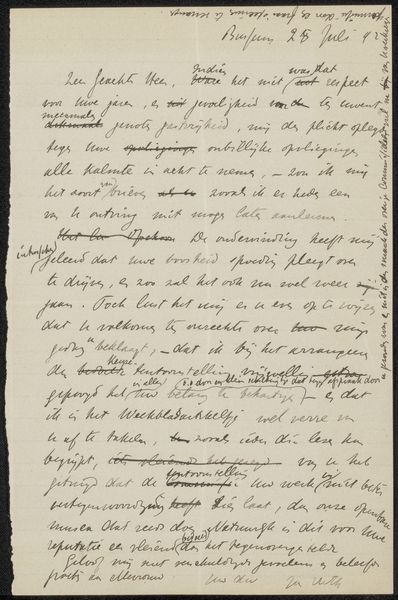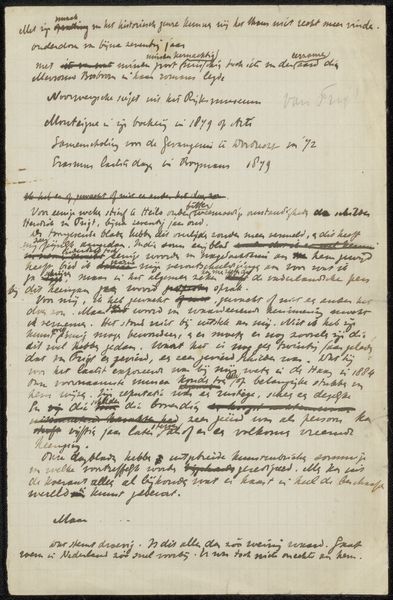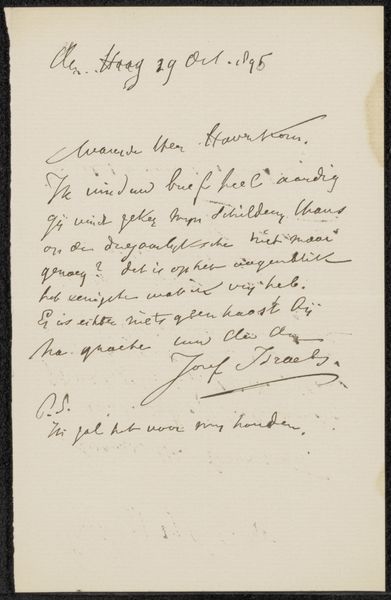
drawing, paper, ink, pen
#
portrait
#
drawing
#
hand-lettering
#
hand drawn type
#
hand lettering
#
paper
#
personal sketchbook
#
ink
#
hand-drawn typeface
#
ink drawing experimentation
#
pen-ink sketch
#
pen work
#
sketchbook drawing
#
pen
#
sketchbook art
Copyright: Rijks Museum: Open Domain
Curator: Ah, here we have “Brief aan Jan Hendrik Maschaupt,” likely from between 1873 and 1876, by Adolphe Mouilleron. It's a letter, a small ink drawing on paper, held at the Rijksmuseum. Editor: It's intriguing how intimate it feels, like peering over someone's shoulder as they jot down a quick note. But it's in a museum, so it seems somewhat contradictory! How do you reconcile that sense of privacy with its public display? Curator: Exactly! That tension is key. Consider the burgeoning public postal systems of the 19th century. This letter represents both a private communication and participation in a broader system of exchange and societal organization. Did the artist envision its ultimate audience beyond Maschaupt, perhaps within a curated collection, shaping public memory and knowledge? Editor: That’s interesting. The date on it is "24 Juin 1873". Does this correspondence perhaps give some clue of the daily life or routine back then? Curator: Potentially. The historical significance may also reside in its depiction of mundane activities or information, contrasting with traditional, heroic depictions. It could offer researchers insights into 19th-century social networks and intellectual circles, offering a micro-history. Editor: So, a seemingly simple note actually reflects broader cultural and historical shifts? Curator: Precisely! It questions how everyday items attain value as historical artifacts. It allows us to examine the cultural values attached to artistic legacy. Editor: I never thought of it that way! It's made me think differently about what's considered "museum-worthy." Curator: Indeed. And hopefully inspires new questions about the social function of art.
Comments
No comments
Be the first to comment and join the conversation on the ultimate creative platform.
